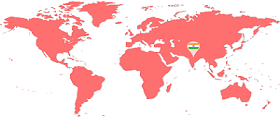Trademarks can be grouped into different categories based on how distinctive they are and how strongly they identify the source of goods or services. This classification is important because the strength of a trademark determines how easily it can be registered and protected under law. The main types of trademarks are explained below.
1. Fanciful Marks
Fanciful marks are completely invented terms that have no meaning in everyday language before they are adopted as trademarks. Because they are unique and inherently distinctive, they are the easiest to register and enforce.
-
Example: Kodak for cameras.
-
Key point: Strongest category of trademarks because they are created solely for branding purposes.
2. Arbitrary Marks
Arbitrary marks use existing words but apply them in a way that has no logical connection to the goods or services they represent. The word is common in daily usage, but its trademark meaning is unique.
-
Example: Apple for computers and mobile phones.
-
Key point: Very strong protection, since the word has no descriptive link to the product.
3. Suggestive Marks
Suggestive marks give a hint about the nature or quality of the goods or services, but they do not directly describe them. Consumers must exercise some thought or imagination to understand the connection.
-
Example: Netflix (suggests entertainment delivered over the internet).
-
Key point: Registrable and protectable, though not as strong as fanciful or arbitrary marks.
4. Descriptive Marks
Descriptive marks directly convey information about the goods or services, such as their quality, purpose, or ingredients. Because these terms should remain available for all businesses to use, they are not usually registrable unless they have acquired a secondary meaning (public recognition of the mark as identifying a single source).
-
Example: Fair & Lovely for cosmetics.
-
Key point: Weak category—requires proof of distinctiveness through use.
5. Generic Marks
Generic marks are the common names of goods or services. They can never be registered as trademarks because they do not distinguish one trader’s products from another’s. In some cases, even once-distinctive trademarks can lose protection if they become generic terms through widespread use.
-
Example: Escalator (originally a trademark, but now the generic name for moving staircases).
-
Key point: Cannot function as a trademark, since the term describes the product itself.
Why the Classification Matters
Choosing a trademark from the stronger categories—fanciful, arbitrary, or suggestive—provides greater legal protection and brand value. Descriptive and generic terms are far weaker, often facing hurdles at the trademark office and in enforcement. Businesses planning long-term brand growth should aim for distinctiveness to secure stronger rights and consumer recognition.

